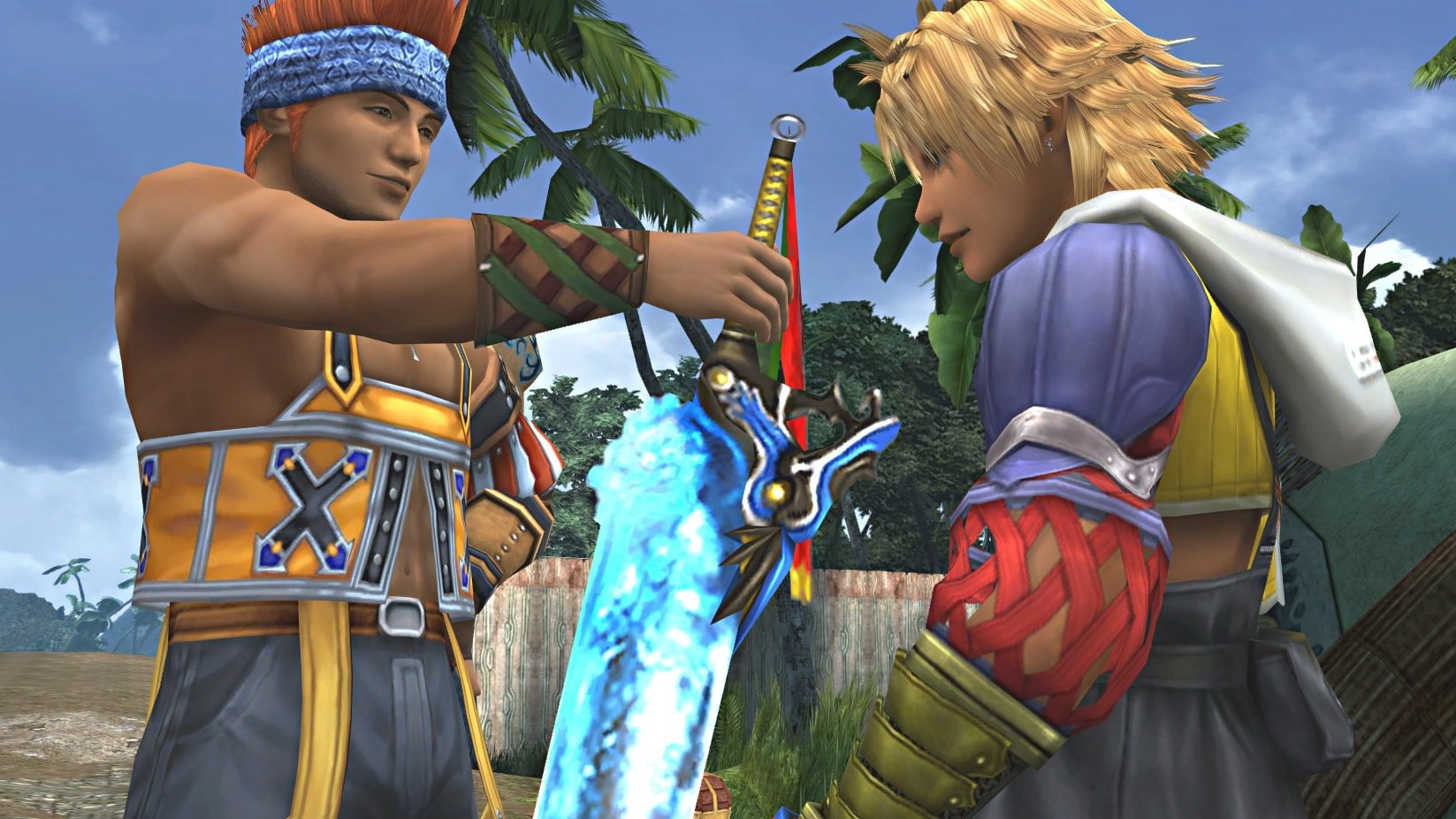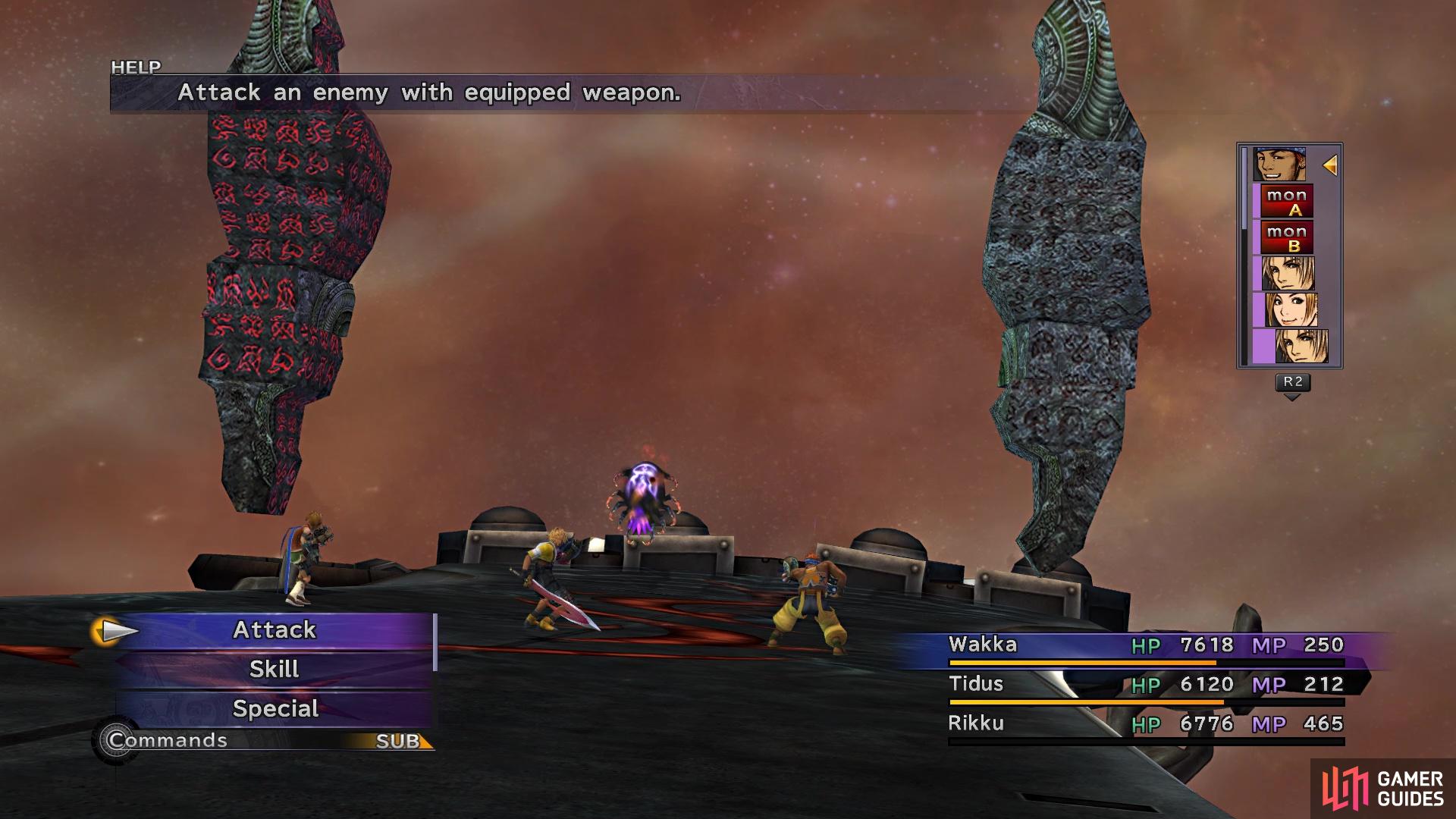We Need to Talk about Yevon (original) (raw)

I have now finished with Final Fantasy X, and looked into the story a bit, as it is somewhat confusing. It’s an enjoyable game with some changes from earlier entries in the series, most notably that you can’t move around on an overworld map, instead just traveling from one location to another through means of roads and boats, and in one case an elephant-like animal called a Shoopuf.
When you finally get an airship, you can automatically travel back to places you’ve visited, but you choose them from a menu instead of actually flying between them manually.
And instead of increasing in levels by gaining experience, you instead gain power and abilities by means of a sphere grid that you move around on. And everyone uses the same grid, although they start in very different places, which means that character-specific skills later become ones that anyone can use. That meant there was much less reason towards the end to use some of the characters, but if you don’t then they’re never able to move around the grid at all. When Rikku first joins the party, she’s the only one who can steal, which can be used to open treasure chests and take robots apart, but both of these stop appearing in battle after a while. Progress on the grid is also halted by locks that need special spheres to open, and I never did get very many of the Level 4 ones. New enemies can sometimes wipe out a party, so I found myself backtracking to the last save sphere quite a bit after obtaining new abilities or significant upgrades in statistics. I also didn’t play Blitzball except the one time you have to, and was never able to find most of the Al Bhed primers. The language is apparently a simple cipher, however.
There’s a frequent theme in Japanese role-playing games of the player trying to take down an evil god and/or religion. Early English translations tended to gloss over this a bit to try to avoid offense, as with Hargon in Dragon Quest II initially being referred to as a wizard rather than a priest. I remember Breath of Fire II being a game that, while it had a pretty terrible translation, it did not beat around the bush in presenting the main church and its god as evil agents of destruction. FFX goes in this sort of direction as well, with a corrupt religion that worships an evil being, but with more nuance. The backstory is that Yu Yevon, leader of the city of Zanarkand, was so desperate to preserve the place during a war that he created a version of it sustained by dreams, then went to extremes to protect it.
His teachings forbid the use of most machines, at least partly to stop people from exploring the ocean where the new Zanarkand was located. Yevonism teaches that the monster Sin is a punishment that can be done away with if people repent of their wrongdoing, when it’s actually a creation of Yevon used to keep people away from Zanarkand. Sin has been temporarily stopped a few times by a summoner using the Final Aeon, but it’s actually a self-perpetuating cycle as the Aeon then becomes the new Sin.
FF7 and 9 both deal with the souls of the dead as the lifeblood of the world and someone interfering that to gain power, while here the spirits of the dead have to either move on willingly or be sent on to the world of the dead through rites administered by a summoner. The Fayth are people who willingly allow their souls to be trapped inside statues in temples produce the Aeons, the summoned monsters of this game. And those who refuse to move on to the Farplane either become Fiends or live on in an undead state, which is the case for Maesters Mika and Seymour, as well as Auron.
The Final Fantasy Wiki mentions that the Unsent might be based on the Japanese concept of yurei, people who died with unfinished business or haven’t been given the proper funerary rites. And Jodo Buddhism, which holds that a Buddha called Amitabha was able to create a paradise beyond reality known as the Pure Land, probably influenced the idea of the dream Zanarkand.
This isn’t the first video game to use that concept, either. Final Fantasy Legend III and Secret of Mana both have places called Pureland.
I think it was around the time I was playing the former game that I noticed a sign for a place called Pureland in New Jersey, which is, strangely enough, an industrial park. I’m sure it’s full of Machina. And speaking of Buddhism, a significant part of it is an escape from the cycle of death and rebirth, and the game has the characters breaking the cycle of Sin. Grand Maester Mika is a hypocrite who doesn’t believe Sin can ever really be defeated despite teaching otherwise, and who looks down on the non-human races of Spira despite having converted them to his religion. And Wakka, who’s generally portrayed as a pretty chill, outgoing guy, is prejudiced against those who don’t follow the religion, especially the Al Bhed, to the point that his closest friends won’t even tell him that Yuna’s mother was Al Bhed. This game’s Cid is her uncle, and he does control the airship, although he doesn’t entirely know how it works.
There are a few different antagonists in the game. The most openly villainous character is Seymour Guado. He initially presents himself as a friend to the party, and fights alongside them in a battle against Sin. He later reveals that he’s pursuing power at all costs, including murdering his father and trying to marry Yuna. His ultimate goal is to become Sin and kill everyone in the world, because existence is suffering. I guess he’s kind of like Kefka if he thought destruction was necessary rather than fun. Since Guado have an affinity for plants, I wondered if his name had anything to do with the character from Little Shop of Horrors, but the wiki suggests it’s connected to the Japanese for death.
Suddenly Seymour is standing beside you.
There’s also Tidus’ father Jecht, who’s not really a villain, just not a great parent, due to his misplaced tough love. He tries to get Tidus to stand up for himself, which does work, but with the side effect of giving his son serious issues.
The other Ronso don’t respect Kimhari until he stands up to them, so is that where Jecht learned his parenting style? When Jecht realizes he’ll probably never get back to his home, he chooses to be the Final Aeon for Yuna’s father Braska, which leads to his becoming the incarnation of Sin. At the end of the game, the party goes inside of Sin, and has to defeat both Seymour and Jecht, and eventually Yevon as well, in the form of a spider-like creature.
The final battle is almost an afterthought, however, as your characters will be automatically revived if they die, meaning it’s practically impossible to lose. It’s still kind of annoying as he heals himself with every turn, but not especially difficult.
The collection I have for the Switch also includes X-2, the first direct sequel to a main line FF game. I don’t know much about it other than that you gain powers based on the outfits you wear. I’m sure I’ll play it at some point, but right now I’m thinking I might want to focus on Octopath Traveler, which I downloaded not long ago and played a little of on a plane ride. I bought FF7 around the same time, since while I played it when it was still fairly new, I never finished it. I know there’s the remake out now, but I hear that’s better if you’ve already played the original, and I’m pretty sure it’s not turn-based.